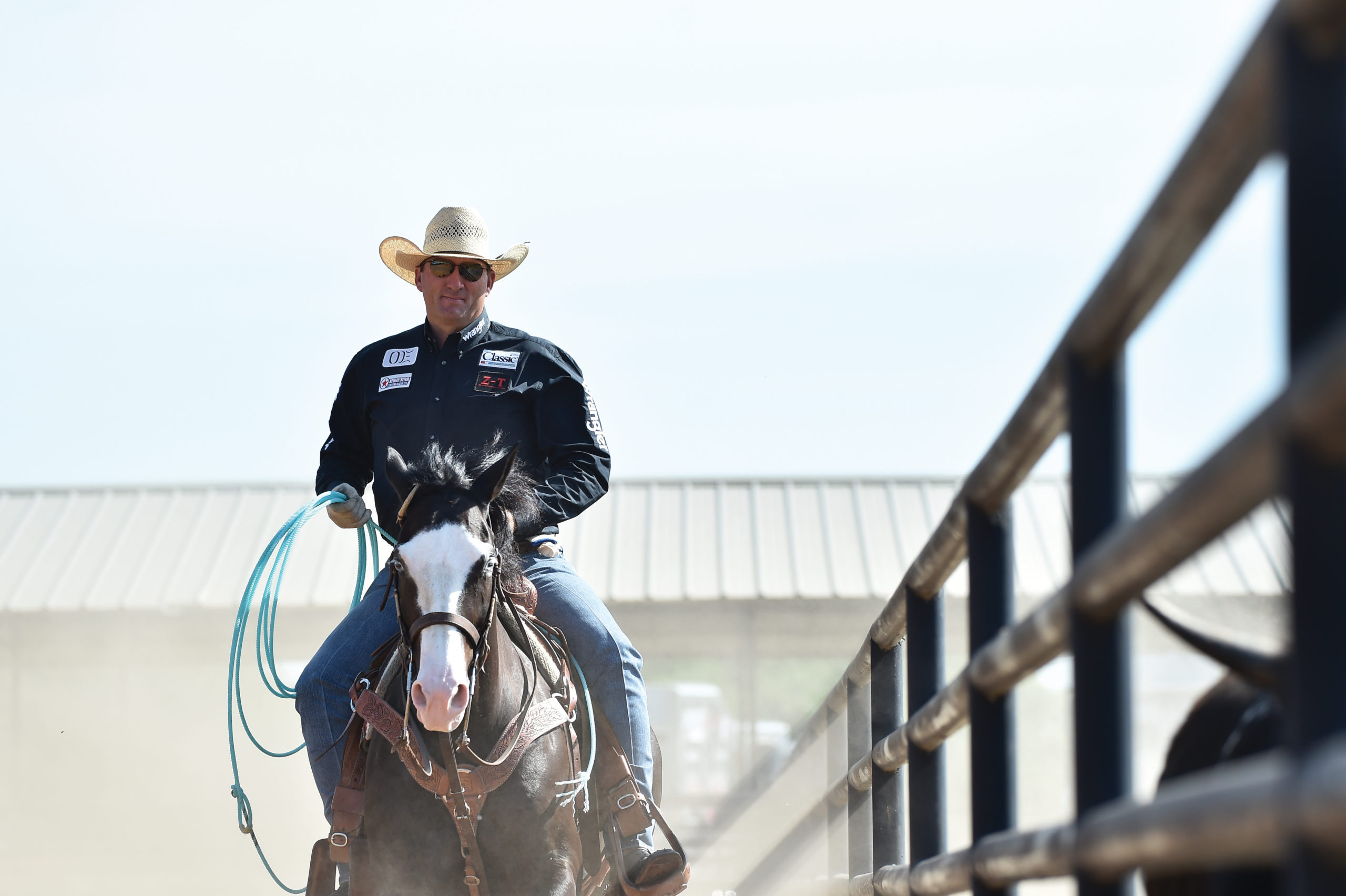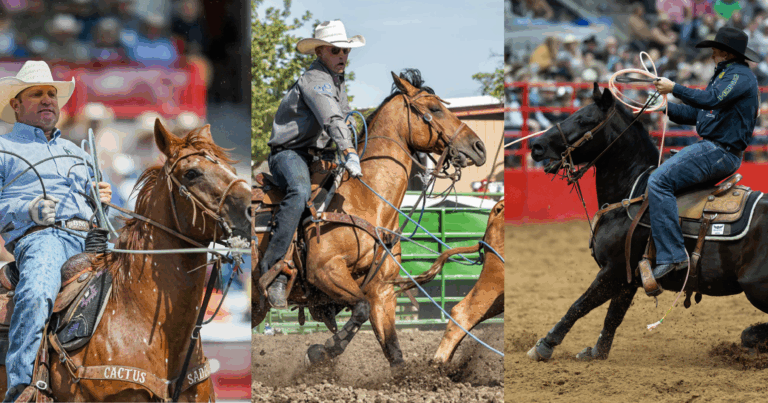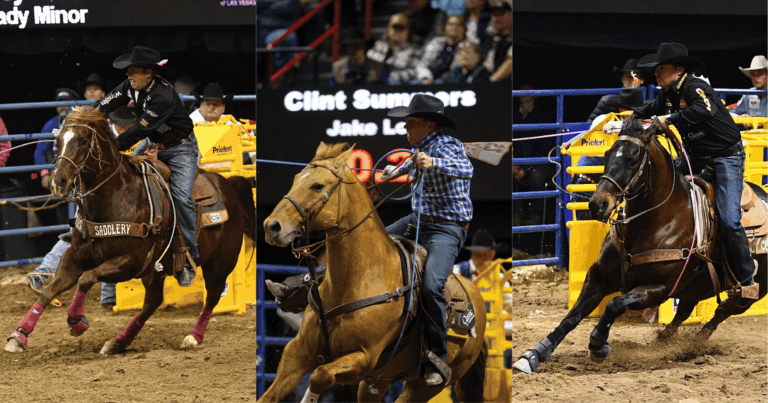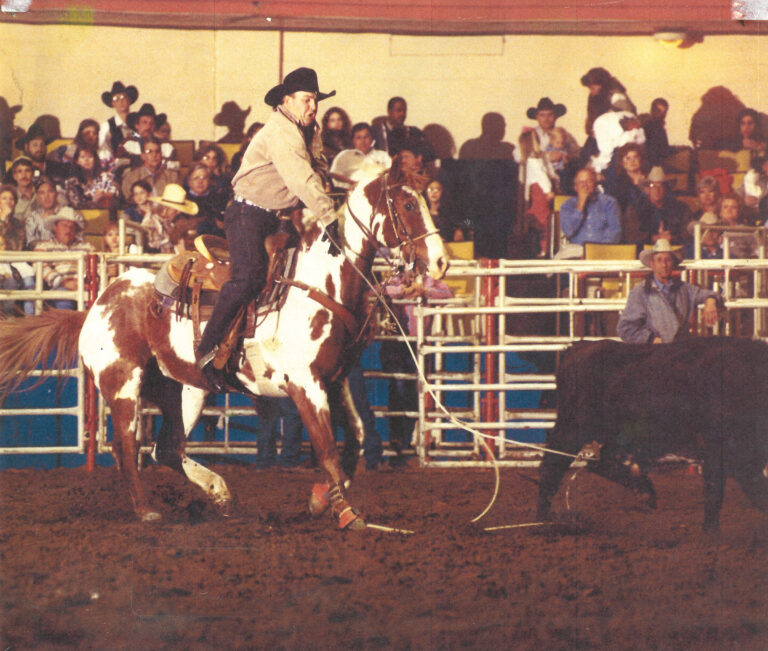There aren’t many secrets on how to train a rope horse that the majority of average ropers can ride. Ultimately, our whole family spends a lot of time with each horse, getting them ready to haul, putting a solid pattern on them and just using them. But over the years, I’ve noticed some elements of our program that make our horses easy for anyone to swing a leg over.
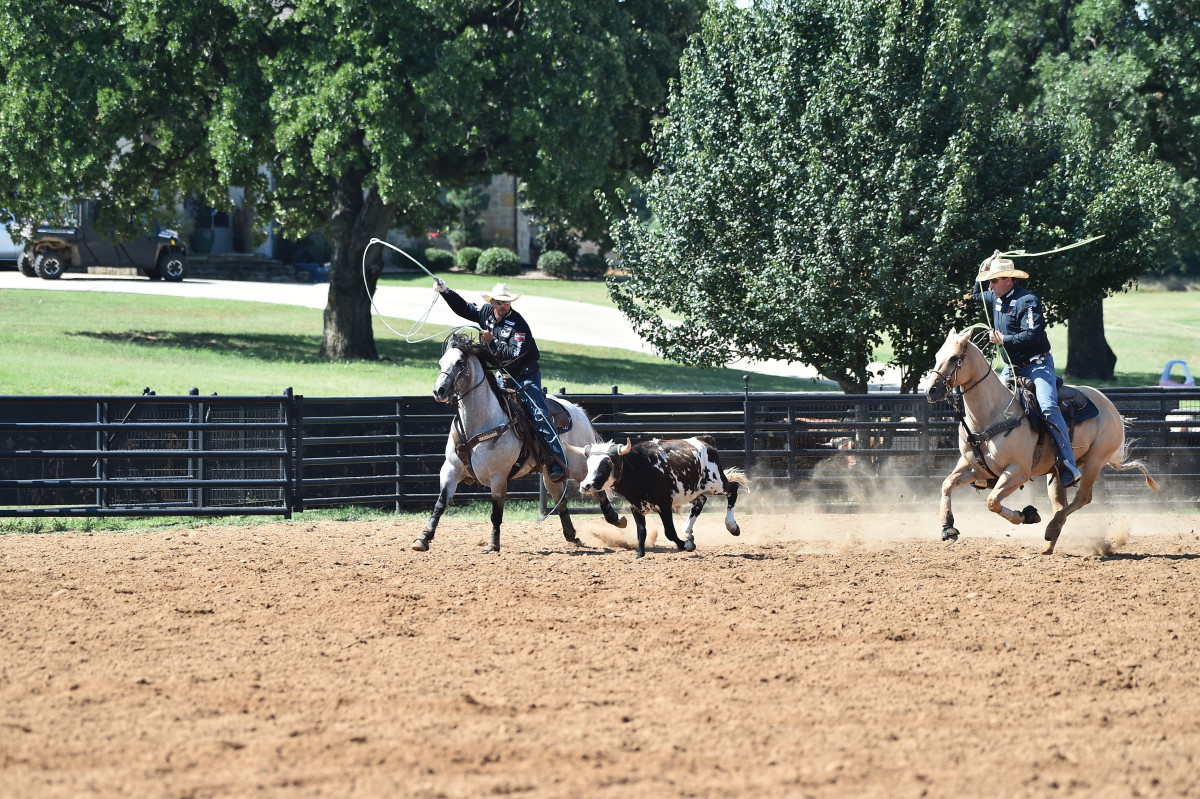
1) Riding like the Average Joe.
I ride more like everyday people. I do my best to ride well, but I ride with my left hand more the way a normal roper does than the top-level show trainers or NFR ropers. Your big-time trainers don’t use their left hand unless they need to, and they make amazing horses. But how many low-numbered ropers ride like that? Plenty of ropers are on the bridle reins on and off the whole way to the steer. I get them patterned and going, but I’ve got to teach that horse it’s OK to be pulled on. They have to stay in a good position and work.
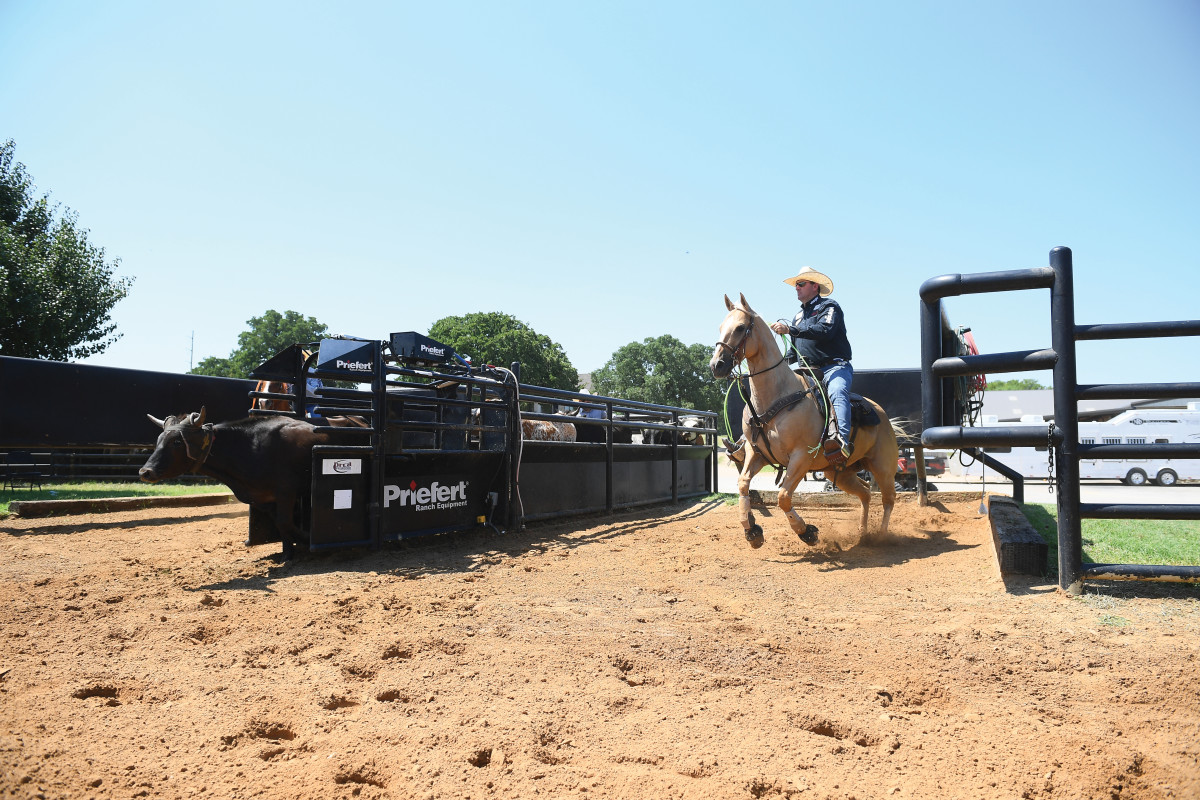
Ultimately, a horse has got to want to be quiet. I take a horse that is a little hotter and I can score all I want, but as soon as I run a couple and get them wound up again and bring them back in there, scoring a bunch more doesn’t teach them anything except, “If I act up, I will get to score and not work.” If they’re the kind of horse that we can keep running steers until they give it up, we’ll do that. If they want to be quiet, those horses are the easiest in the box.
Bruce and Jantzen Win Case IH #16 Championships at the USTRC’s Cinch National Finals of Team Roping
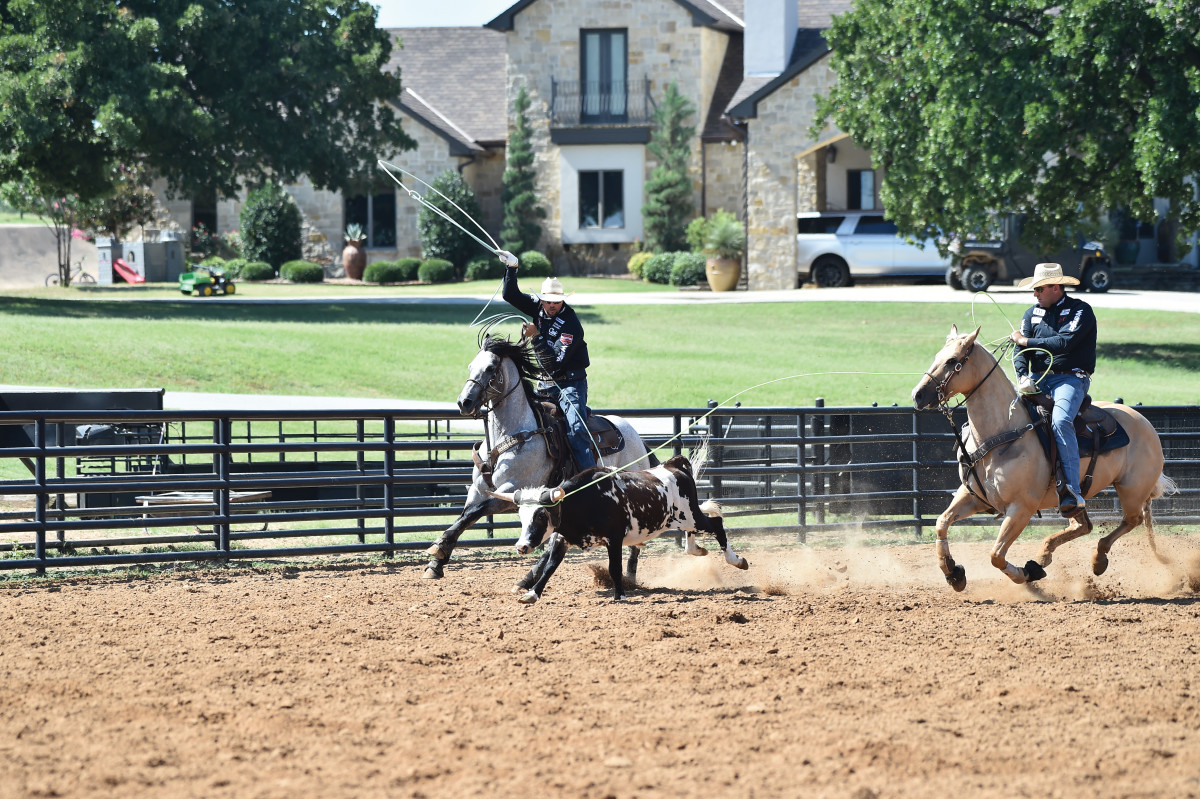
3) Easy Corner (Part 1)
Most horses don’t need to drag a back leg and sidepass out of there. Roping has evolved. If a roper reaches and ducks, those horses’ heads are turned to the left with their ribs and hips to the steer, and they’re so athletic they can be pulling the steer like that and face. Rarely do you see a guy reach and the horse stands up and drags a leg and steps out in front of them.
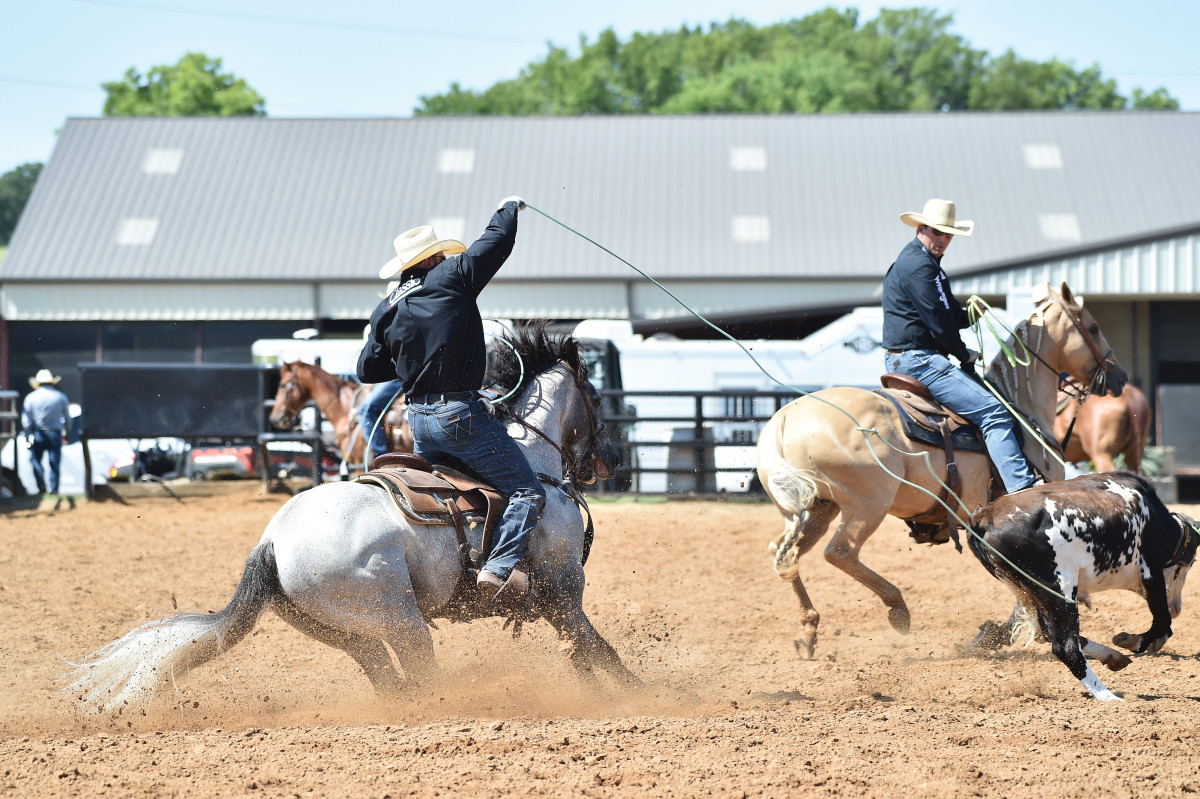
4) Easy Corner (Part 2)
I want the horse to run up there, maintain the spot, let me rope, dally and turn off. I don’t want them to throw their hips and ribs to the steer and switch underneath the rope, but a nice, smooth, rounded-off turn will stay on a leg a little bit and widen a little bit. I want a smooth roll right there with their head and front end up. That’s sometimes the difference, guys let their horses roll over the bridle and go too fast. I want their shoulders up and head up, but it does not have to be the fancy, butt-dragging corner that some people think they want. That could be harder for some ropers to ride.
Training that butt-dragging, sidepass corner takes so long. It’s a whole lot easier to rope and turn them off. The horses that Trevor Brazile and Miles Baker ride are bigger and stronger, and they can keep control of the steer and do it. That program they have is hard to beat because they get them so broke. It takes so long to make those horses, and they put the time in. But your average horse that runs to the spot and turns off nice, smooth and controlled, those horses make a whole lot faster and easier. Your average guy who has money to buy can ride that horse. He might not be able to ride one too broke and too sensitive.
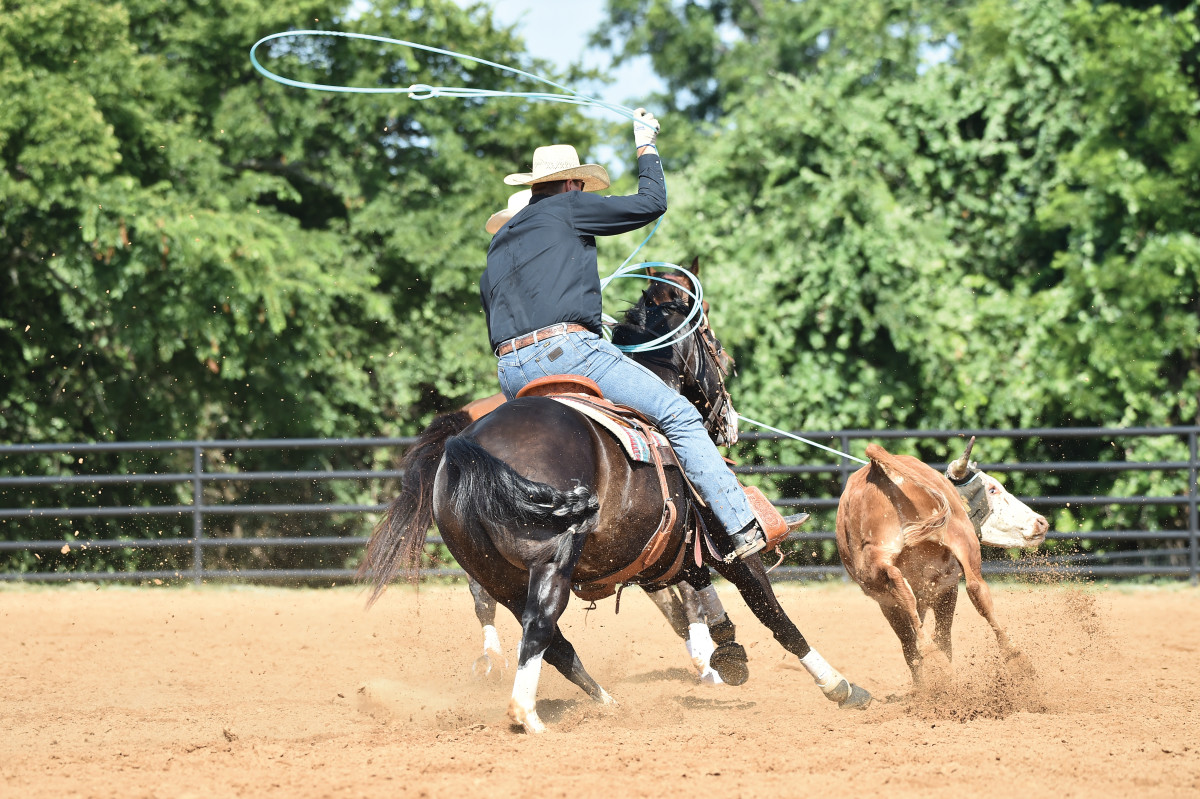
5) Smooth Pattern
Heel horses are really the same—you have a whole lot less trouble with them in the box because they don’t have to be right in the corner. We don’t use a butt bar a whole lot on the heel horse or head horse, either, so they’re not learning to lean on anything. We get them to just go down the pen and let you hold them in a spot then turn them loose around the corner, then stay there two or three strides and just heel them—keeping it simple and smooth.
The key with heel horses is to not throw very fast—that’s the main thing. That is, of course, unless they’re too free and don’t look for the throw, so I’ll throw fast on that horse for a week or so, then get to where I’ll just push them around there. I rope the horse on separation as they’re going away, so the horse has to read my body language for that separation to occur. I want that steer to drag my horse through the corner. We do a lot of that, just making them patterned and doing the same thing all the time. We’ll put a few different riders on these horses, we’ll stick a 6 on them and then stick my son, Haze, on them. That’s the real test—and if he can rope on them, then we know we’re getting somewhere.




